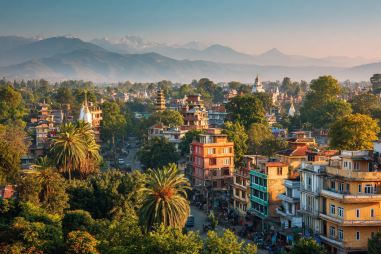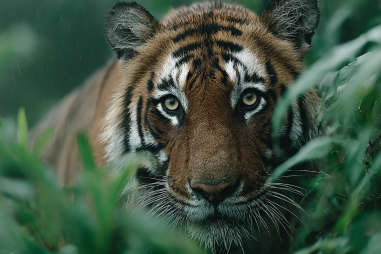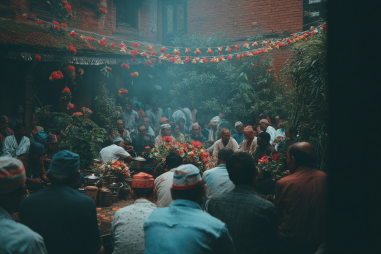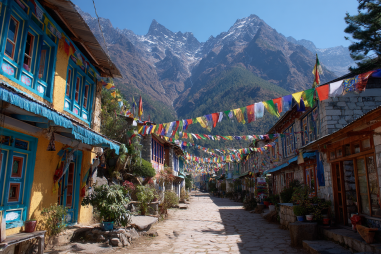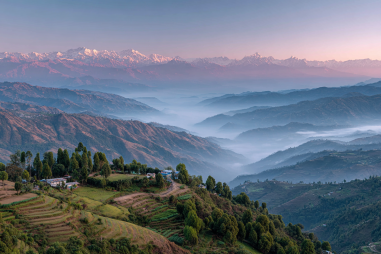Embarking on the Everest Base Camp trek is a dream adventure for many, offering breathtaking views of the world’s tallest mountain and an enriching journey through Sherpa culture and the Himalayan landscape. However, planning this trek can feel daunting, especially for first-timers. With varying altitudes, distances, and the need for acclimatization, a well-structured itinerary can be your best companion. This guide will walk you through a day-by-day Everest Base Camp itinerary, including key highlights, trekking distances, rest days, and practical tips to ensure you make the most of this unforgettable experience.
Overview of the Everest Base Camp Trek
The Everest Base Camp trek typically spans around 12 to 14 days, depending on the route and your pace. It covers approximately 130 kilometers (round trip) through diverse terrain, starting from Lukla, the gateway to the Khumbu region. Along the way, trekkers pass through charming Sherpa villages, ancient monasteries, and stunning mountain vistas culminating in the iconic Everest Base Camp itself at about 5,364 meters (17,598 feet).
This trek is considered moderate to challenging due to high altitude and varying trail conditions. Proper acclimatization and physical preparation are essential to enjoy the journey safely and comfortably. Most itineraries include strategic rest days to help the body adapt and reduce the risk of altitude sickness.
Day-by-Day Trekking Plan with Distances and Elevation
Here’s a detailed daily plan breaking down essential distances, elevation changes, and key stops along your trek to Everest Base Camp:
- Day 1: Arrival in Lukla & trek to Phakding
Distance: ~8 km | Elevation gain: 2,860 m to 2,610 m
After a scenic flight into Lukla, the trek begins with a gentle descent to Phakding, a small village nestled in pine forests. This day helps you ease into the trekking rhythm. - Day 2: Phakding to Namche Bazaar
Distance: ~10 km | Elevation gain: 2,610 m to 3,440 m
Today’s ascent is steeper, with the famous suspension bridge crossings and views of the Dudh Koshi River. Namche Bazaar is a bustling hub with shops and cafes, perfect for your first major stop. - Day 3: Acclimatization day in Namche Bazaar
Elevation: 3,440 m
A vital rest day to explore and acclimatize, many trekkers hike to nearby viewpoints like the Everest View Hotel for panoramic mountain vistas or visit the Sherpa Museum. - Day 4: Namche Bazaar to Tengboche
Distance: ~10 km | Elevation gain: 3,440 m to 3,860 m
The trail ascends through rhododendron forests to reach Tengboche, known for its beautiful monastery and sweeping views of Everest, Ama Dablam, and Lhotse. - Day 5: Tengboche to Dingboche
Distance: ~11 km | Elevation gain: 3,860 m to 4,410 m
A steady climb brings you to Dingboche, a charming village ideal for another acclimatization stop. - Day 6: Acclimatization day at Dingboche
Elevation: 4,410 m
Use this day to take short hikes nearby for acclimatization, such as the Nangkartshang Peak for impressive views. - Day 7: Dingboche to Lobuche
Distance: ~8 km | Elevation gain: 4,410 m to 4,940 m
The trail continues alongside the Khumbu Glacier, with Lobuche village marking your entry into higher altitudes. - Day 8: Lobuche to Everest Base Camp and back to Gorak Shep
Distance: ~14 km | Elevation gain: 4,940 m to 5,364 m and down to 5,164 m
This is the highlight day — a challenging trek to Everest Base Camp followed by a descent to Gorak Shep for overnight rest. Expect stunning glacier views and a sense of accomplishment. - Day 9: Gorak Shep to Kala Patthar to Pheriche
Distance: ~15 km
Starting early, you’ll hike to Kala Patthar (5,545 m) for perhaps the best panoramic sunrise views of Everest and surrounding peaks. The day ends with a descent to Pheriche. - Day 10-12: Return trek to Lukla
Distance per day: ~10-15 km
Retracing your steps, you gradually descend, passing through Namche Bazaar and Phakding, allowing your body to recover from altitude and fatigue.
Key Villages and Landmarks Along the Way
Your trek will pass through several cultural and natural highlights, each adding a unique flavor to the journey:
- Namche Bazaar: The vibrant Sherpa trading town and cultural hub.
- Tengboche Monastery: A spiritual center perched on a ridge with spectacular mountain views.
- Dingboche: A picturesque village surrounded by alpine meadows.
- Lobuche: A high-altitude settlement with rugged landscapes.
- Gorak Shep: The last stop before Everest Base Camp, offering cozy teahouses and rest.
- Kala Patthar: The ultimate viewpoint providing iconic Everest vistas at sunrise.
Rest Days and Acclimatization Points
Acclimatization is crucial on this trek to avoid altitude sickness. The best spots to take rest days are Namche Bazaar and Dingboche. These breaks allow your body to adjust to the thinner air by engaging in light activities such as short hikes or cultural visits rather than complete inactivity. Listening to your body and communicating with your guide about any symptoms is vital for a safe trek.
Tips for Pacing and Managing Fatigue
When trekking to Everest Base Camp, pacing yourself is key. Here are some handy tips:
- Start early each day when energy levels are higher and weather tends to be more stable.
- Keep a steady, moderate pace; avoid rushing or pushing too hard uphill.
- Stay well-hydrated and eat sufficient calories to maintain energy.
- Take short breaks frequently to catch your breath and enjoy the scenery.
- Monitor signs of altitude sickness and consult your guide if symptoms worsen.
- Rest adequately at night and prioritize sleep to aid recovery.
Recommended Guide and Porter Services
Hiring a knowledgeable guide and porter can enhance your Everest Base Camp experience immensely. Guides provide expert navigation, educate you about the terrain and culture, and help monitor health against altitude sickness. Porters can carry heavy backpacks, allowing you to trek more comfortably and reduce fatigue. Using these services not only improves safety but also supports the local economy in the Khumbu region.
Flexibility Options for Shorter or Extended Treks
If your schedule or fitness level requires adjustments, there are several options:
- Shorter Trek: Consider turning around at Namche Bazaar or Tengboche for a lighter itinerary suitable for beginners or those with time constraints.
- Extended Trek: Incorporate additional days for acclimatization or explore alternative routes like the Gokyo Lakes or the Three Passes trek for a more immersive adventure.
- Helicopter Options: Some opt to fly back from Lukla to Kathmandu to save time and energy after the return trek.
Customizing your itinerary according to your interests and physical condition makes for a safer and more enjoyable journey.
Crafting Your Ideal Trek to Everest Base Camp
Planning your Everest Base Camp itinerary involves balancing daily trekking distances, rest for acclimatization, and time to soak in the culture and scenery. This well-paced itinerary ensures gradual altitude gain, reduces fatigue, and offers moments to appreciate the unique environment and hospitality of the Khumbu region.
By preparing thoughtfully, hiring experienced guides and porters, and remaining flexible, you set yourself up for a truly memorable trek filled with awe-inspiring landscapes and personal achievement. Whether you are a seasoned trekker or a first-time adventurer, this journey to Everest Base Camp promises to be one of the most rewarding experiences of your life.


